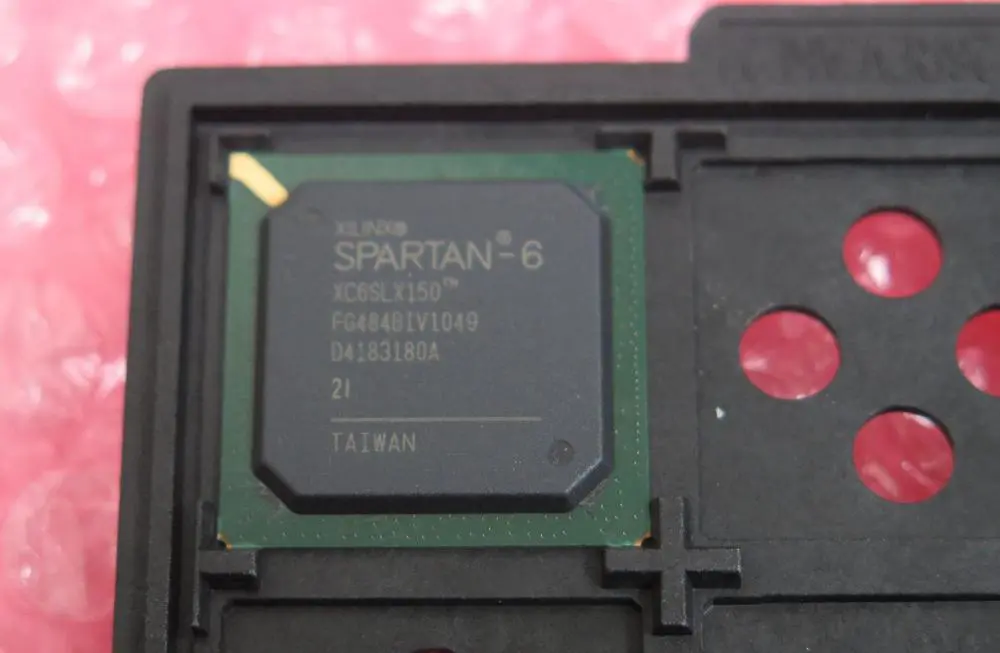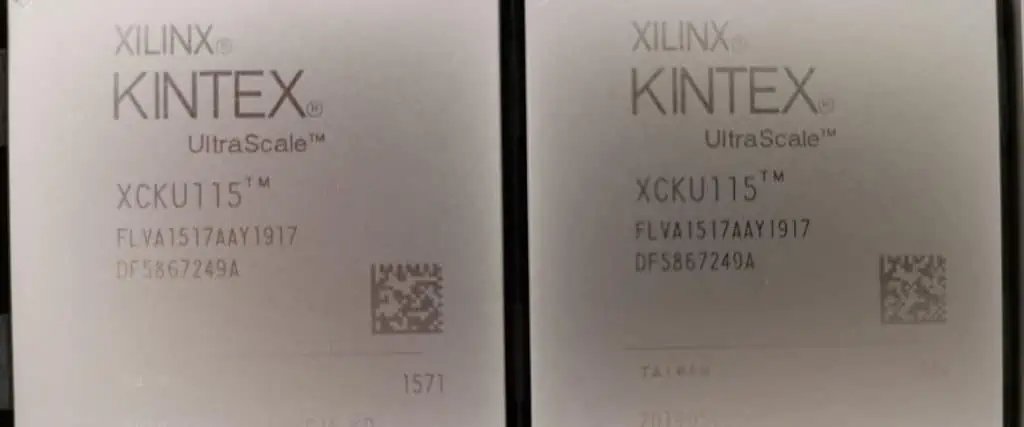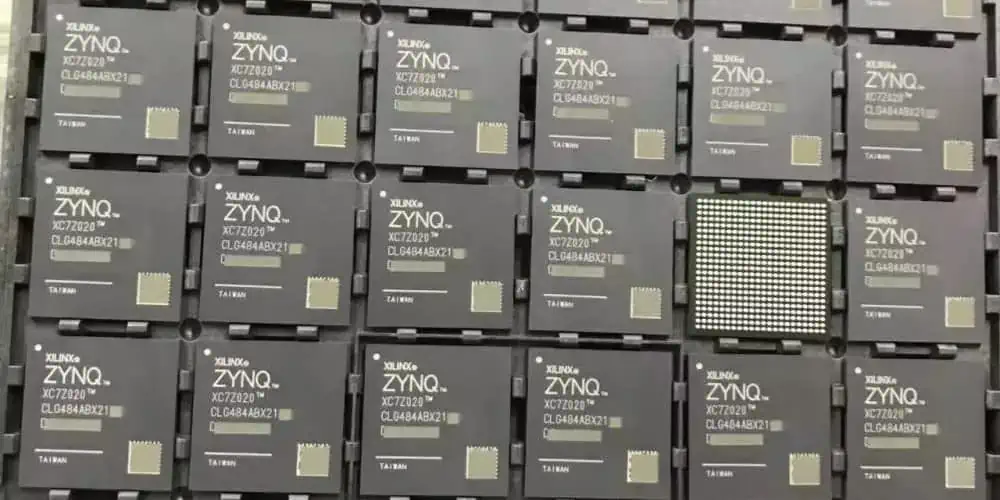Introduction to Xilinx FPGAs
Field-Programmable Gate Arrays (FPGAs) have revolutionized the world of digital circuit design, offering unprecedented flexibility and performance. At the forefront of this technology stands Xilinx, a company renowned for its innovative FPGA solutions. Xilinx FPGAs have become integral components in various industries, from automotive and aerospace to telecommunications and data centers.
Xilinx, now a part of Advanced Micro Devices (AMD), has been a pioneer in the FPGA industry since its inception in 1984. The company’s FPGAs are known for their high performance, energy efficiency, and adaptability, making them ideal for a wide range of applications. Whether you’re developing cutting-edge AI algorithms, designing advanced communication systems, or creating high-performance computing solutions, Xilinx FPGAs offer the versatility and power to bring your ideas to life.
In this comprehensive guide, we’ll delve into the world of Xilinx FPGAs, exploring their product families, grades, applications, and costs. By the end of this article, you’ll have a thorough understanding of Xilinx’s FPGA offerings and how they can benefit your projects.
Xilinx FPGA Product Families
Xilinx offers a diverse range of FPGA product families, each designed to cater to specific performance, power, and cost requirements. Let’s explore the main Xilinx FPGA product families:
1. Spartan UltraScale+ FPGA

The Spartan UltraScale+ family is Xilinx’s cost-optimized FPGA solution, designed for high-volume applications that require performance and power efficiency.
Key features of Spartan UltraScale+ FPGAs:
- Optimized for cost-sensitive markets
- Built on 16nm FinFET+ process technology
- Offers excellent performance-per-watt
- Suitable for applications like industrial IoT, motor control, and entry-level video processing
2. Artix UltraScale+ FPGA

Artix UltraScale+ FPGAs provide a balance of high performance and low power consumption, making them ideal for applications that require compact form factors and energy efficiency.
Key features of Artix UltraScale+ FPGAs:
- Built on 16nm FinFET+ process technology
- Offers up to 64 GTH transceivers with speeds up to 16.3 Gb/s
- Supports PCIe Gen3 and Gen4
- Ideal for applications like software-defined radio, machine vision, and medical imaging
3. Kintex UltraScale+ FPGA

The Kintex UltraScale+ family is designed for applications that demand high performance and bandwidth while maintaining a balance with power efficiency.
Key features of Kintex UltraScale+ FPGAs:
- Built on 16nm FinFET+ process technology
- Offers up to 64 GTY transceivers with speeds up to 32.75 Gb/s
- Supports PCIe Gen3 and Gen4
- Suitable for applications like 5G wireless, data center acceleration, and high-performance computing
4. Virtex UltraScale+ FPGA

Virtex UltraScale+ FPGAs represent Xilinx’s highest-performance FPGA family, designed for the most demanding applications that require maximum throughput and processing power.
Key features of Virtex UltraScale+ FPGAs:
- Built on 16nm FinFET+ process technology
- Offers up to 128 GTY transceivers with speeds up to 32.75 Gb/s
- Supports PCIe Gen3, Gen4, and Gen5
- Ideal for applications like AI/ML acceleration, high-performance computing, and aerospace & defense
5. Zynq UltraScale+ MPSoC

The Zynq UltraScale+ MultiProcessor System-on-Chip (MPSoC) family combines the flexibility of FPGAs with the power of embedded processors, creating a versatile platform for a wide range of applications.
Key features of Zynq UltraScale+ MPSoCs:
- Integrates Arm Cortex-A53 application processors and Cortex-R5 real-time processors
- Includes Mali-400 MP2 GPU for graphics acceleration
- Built on 16nm FinFET+ process technology
- Suitable for applications like autonomous driving, industrial automation, and embedded vision
Read more about:
Grades of Xilinx FPGA
Xilinx offers FPGAs in various grades to meet the specific requirements of different industries and applications. These grades ensure that the FPGAs can operate reliably in diverse environments, from consumer electronics to harsh industrial settings and even space applications.
1. Automotive Grade FPGA
Automotive grade FPGAs are designed to meet the rigorous standards of the automotive industry, including extended temperature ranges, high reliability, and compliance with automotive safety standards.
(1) Artix-7 XA
The Artix-7 XA family offers a cost-effective solution for automotive applications that require high performance and low power consumption.
Key features of Artix-7 XA FPGAs:
- AEC-Q100 qualified
- Operating temperature range of -40°C to +125°C
- Ideal for advanced driver assistance systems (ADAS) and infotainment systems
(2) Artix UltraScale+ XA
Artix UltraScale+ XA FPGAs provide higher performance and integration for automotive applications, built on the advanced 16nm process technology.
Key features of Artix UltraScale+ XA FPGAs:
- AEC-Q100 qualified
- Operating temperature range of -40°C to +125°C
- Suitable for autonomous driving and advanced in-vehicle networking
(3) Spartan-7 XA

The Spartan-7 XA family offers a cost-optimized solution for automotive applications that require modest performance and low power consumption.
Key features of Spartan-7 XA FPGAs:
- AEC-Q100 qualified
- Operating temperature range of -40°C to +125°C
- Ideal for automotive body electronics and entry-level ADAS applications
2. Defense Grade FPGA
Defense grade FPGAs are designed to meet the stringent requirements of military and aerospace applications, including extended temperature ranges, radiation tolerance, and long-term reliability.
(1) Artix-7 XQ
Artix-7 XQ FPGAs offer a balance of performance and power efficiency for defense and aerospace applications.
Key features of Artix-7 XQ FPGAs:
- MIL-STD-883 compliant
- Extended temperature range of -55°C to +125°C
- Suitable for software-defined radio and electronic warfare applications
(2) Kintex-7 XQ
Kintex-7 XQ FPGAs provide higher performance and capacity for defense applications that require increased processing power.
Key features of Kintex-7 XQ FPGAs:
- MIL-STD-883 compliant
- Extended temperature range of -55°C to +125°C
- Ideal for radar systems and high-performance signal processing
(3) Kintex UltraScale+ XQ
Kintex UltraScale+ XQ FPGAs offer advanced performance and integration for defense applications, built on the 16nm process technology.
Key features of Kintex UltraScale+ XQ FPGAs:
- MIL-STD-883 compliant
- Extended temperature range of -55°C to +125°C
- Suitable for advanced radar systems and high-bandwidth communications
(4) Virtex-7 XQ
Virtex-7 XQ FPGAs provide the highest performance and capacity in the 7 Series defense-grade lineup.
Key features of Virtex-7 XQ FPGAs:
- MIL-STD-883 compliant
- Extended temperature range of -55°C to +125°C
- Ideal for complex signal processing and cryptography applications
(5) Virtex UltraScale+ XQ
Virtex UltraScale+ XQ FPGAs represent the pinnacle of defense-grade FPGA performance, offering unparalleled processing power and integration.
Key features of Virtex UltraScale+ XQ FPGAs:
- MIL-STD-883 compliant
- Extended temperature range of -55°C to +125°C
- Suitable for advanced electronic warfare and AI-enabled defense systems
3. Space Grade
Space grade FPGAs are designed to operate in the harsh environment of space, offering radiation tolerance and reliability for satellite and space exploration applications.
(1) Kintex UltraScale XQR
The Kintex UltraScale XQR family provides high-performance, radiation-tolerant FPGAs for space applications.
Key features of Kintex UltraScale XQR FPGAs:
- Radiation-tolerant design
- Total Ionizing Dose (TID) tolerance of up to 100 krad(Si)
- Single Event Upset (SEU) mitigation techniques
- Suitable for satellite communications, Earth observation, and space exploration missions
Xilinx FPGA Development Boards
Xilinx offers a wide range of development boards to help engineers and researchers prototype and test their designs using Xilinx FPGAs. These boards provide a convenient platform for exploring the capabilities of Xilinx FPGAs and developing applications across various domains.
Some popular Xilinx FPGA development boards include:
- Alveo Accelerator Cards: Designed for data center acceleration, these cards feature high-performance Xilinx UltraScale+ FPGAs.
- Zynq UltraScale+ MPSoC ZCU104 Evaluation Kit: A versatile platform for evaluating Zynq UltraScale+ MPSoCs, ideal for embedded vision and industrial IoT applications.
- Artix-7 FPGA Development Board: A cost-effective board for prototyping designs using Artix-7 FPGAs, suitable for various applications.
- Kintex UltraScale FPGA KCU116 Evaluation Kit: A high-performance development platform for exploring Kintex UltraScale FPGAs, ideal for communications and signal processing applications.
- Virtex UltraScale+ VCU118 Evaluation Kit: A cutting-edge development board featuring Virtex UltraScale+ FPGAs, designed for high-end applications and research.
These development boards come with comprehensive software support, including Xilinx’s Vivado Design Suite and Vitis unified software platform, enabling developers to quickly prototype and optimize their FPGA designs.
Cost of Xilinx FPGAs

The cost of Xilinx FPGAs varies widely depending on the product family, performance capabilities, and volume of purchase. Here’s a general overview of the cost ranges for different Xilinx FPGA families:
- Spartan Series: 10−10−100+
- Lowest cost option, suitable for high-volume applications
- Price varies based on logic capacity and features
- Artix Series: 50−50−500+
- Mid-range option balancing cost and performance
- Price depends on logic capacity, transceiver count, and other features
- Kintex Series: 500−500−5,000+
- Higher-performance option with increased logic capacity and features
- Price varies significantly based on specific model and capabilities
- Virtex Series: 2,000−2,000−20,000+
- High-end FPGAs with maximum performance and features
- Pricing reflects the advanced capabilities and large logic capacities
- Zynq UltraScale+ MPSoCs: 500−500−10,000+
- Pricing depends on the specific model, processor cores, and FPGA resources
- Higher-end models with more powerful processors and larger FPGA fabric command premium prices
It’s important to note that these price ranges are approximate and can vary based on factors such as:
- Volume of purchase: Bulk orders often receive discounts
- Distribution channel: Prices may differ between authorized distributors
- Specific model and features: Within each family, prices vary based on exact specifications
- Market conditions: Prices can fluctuate due to supply and demand dynamics
For precise pricing information, it’s best to contact Xilinx or authorized distributors directly. Additionally, consider the total cost of ownership, including development tools, support, and power consumption, when evaluating FPGA solutions for your project.
Xilinx FPGA Application Markets
Xilinx FPGAs find applications across a wide range of industries and markets, thanks to their flexibility, performance, and ability to adapt to evolving standards. Here are some key application markets for Xilinx FPGAs:
1. Telecommunications and Networking
Xilinx FPGAs play a crucial role in the telecommunications industry, particularly in the development and deployment of 5G networks. They are used in:
- 5G base stations and remote radio heads
- Network function virtualization (NFV)
- Software-defined networking (SDN)
- High-speed optical transport networks
2. Data Centers and Cloud Computing
In the rapidly evolving world of data centers, Xilinx FPGAs provide acceleration for various workloads:
- AI and machine learning inference
- Database acceleration
- Video transcoding and streaming
- Network acceleration and security
3. Automotive
The automotive industry leverages Xilinx FPGAs for advanced driver assistance systems (ADAS) and autonomous vehicles:
- Sensor fusion and processing
- Computer vision for object detection and recognition
- In-vehicle networking and infotainment systems
- Functional safety systems
4. Aerospace and Defense
Xilinx’s defense-grade FPGAs are widely used in aerospace and defense applications:
- Radar and electronic warfare systems
- Satellite communications
- Secure communications and cryptography
- Avionics and flight control systems
5. Industrial Automation and IoT
In the industrial sector, Xilinx FPGAs enable smart manufacturing and Industry 4.0 initiatives:
- Industrial robotics and motion control
- Machine vision and quality inspection
- Industrial IoT gateways and edge computing
- Predictive maintenance systems
6. Healthcare and Medical Devices
Xilinx FPGAs contribute to advancements in medical technology:
- Medical imaging systems (MRI, CT, ultrasound)
- Real-time patient monitoring devices
- DNA sequencing and bioinformatics
- Surgical robots and assistance systems
7. Broadcast and Pro A/V
The media and entertainment industry relies on Xilinx FPGAs for:
- 4K/8K video processing and encoding
- High-definition video switching and routing
- Real-time graphics rendering
- Virtual and augmented reality systems
8. Consumer Electronics
While not as prevalent as in other markets, Xilinx FPGAs find their way into high-end consumer products:
- High-performance gaming systems
- Digital cameras and camcorders
- Smart home devices and IoT hubs
- Audio processing equipment
9. Scientific Research and High-Performance Computing
Xilinx FPGAs are valuable tools in scientific research and high-performance computing:
- Particle physics experiments (e.g., at CERN)
- Climate modeling and weather forecasting
- Financial modeling and high-frequency trading
- Quantum computing research and development
The versatility of Xilinx FPGAs allows them to address the unique challenges of each of these markets, providing customizable, high-performance solutions that can adapt to changing requirements and standards.
Conclusion
Xilinx FPGAs represent a powerful and versatile technology that continues to shape the landscape of digital design across numerous industries. From the cost-effective Spartan series to the high-performance Virtex UltraScale+ family, Xilinx offers a comprehensive range of FPGA solutions to meet diverse application needs.
The various grades of Xilinx FPGAs, including automotive, defense, and space-grade options, ensure that these flexible devices can operate reliably in even the most demanding environments. With development boards and robust software tools, Xilinx provides a complete ecosystem for engineers and researchers to innovate and bring their ideas to life.
While the cost of Xilinx FPGAs can vary significantly depending on the specific model and features, the total value proposition extends beyond the initial price. The flexibility, performance, and long-term adaptability of FPGAs often result in reduced overall system costs and faster time-to-market for many applications.
The wide range of application markets for Xilinx FPGAs demonstrates their versatility and importance in driving technological innovation. From telecommunications and data centers to automotive and healthcare, Xilinx FPGAs are at the forefront of enabling new capabilities and improved performance across industries.
As we look to the future, the role of FPGAs is likely to become even more critical. With the increasing demand for AI and machine learning at the edge, the need for customizable, high-performance computing solutions will only grow. Xilinx, now part of AMD, is well-positioned to continue driving innovation in the FPGA space, offering solutions that meet the evolving needs of developers and industries worldwide.

